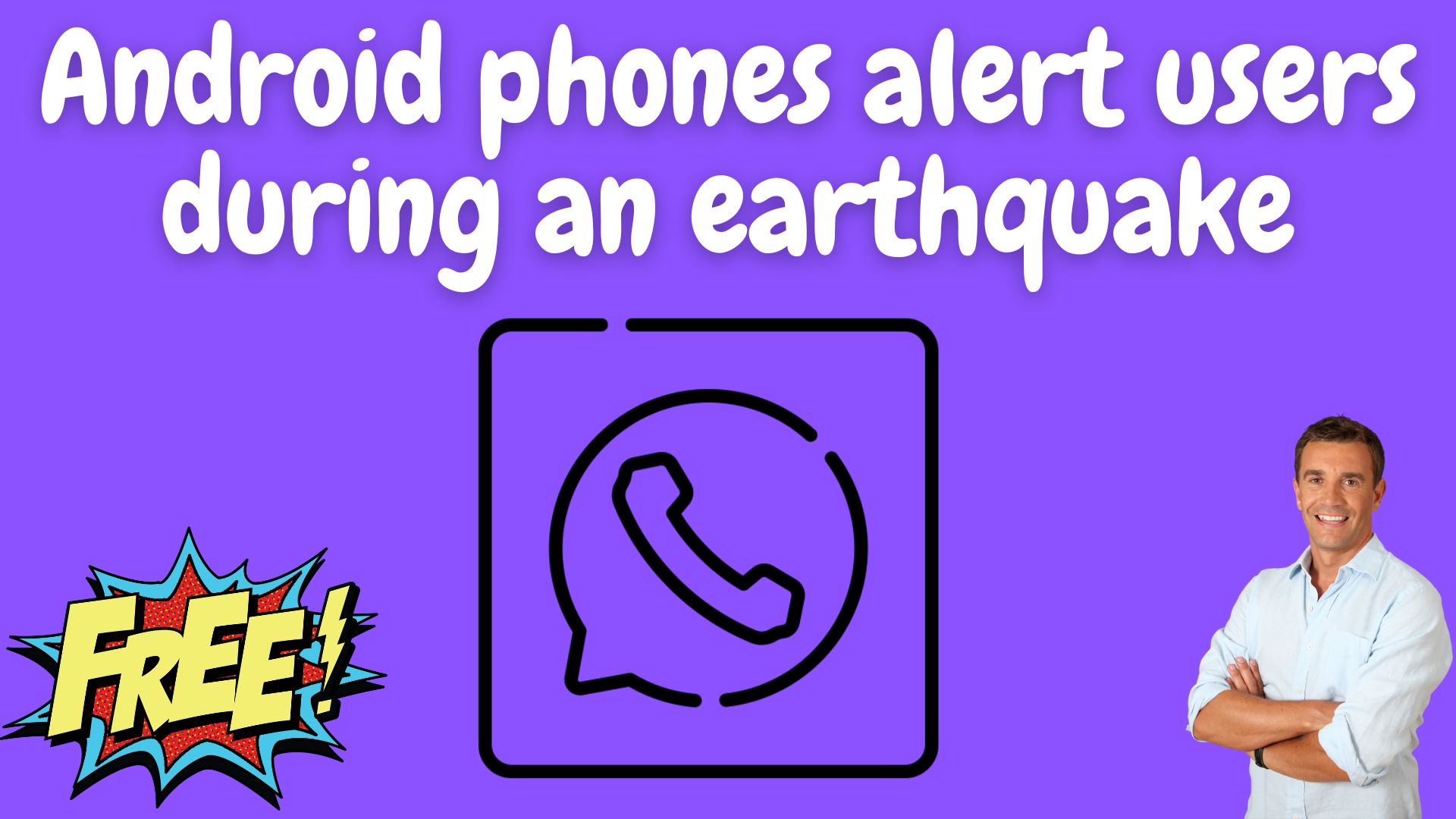Android phones alert users during an earthquake
Google has teamed up with teams in California, Washington, and Oregon to publish alerts generated by their technology.

The system detects the earthquake’s vibration using a network of 1,675 seismic sensors, then uses data analysis to determine the location and magnitude of the earthquake.
The Android Earthquake Alerts System receives the signal from the ShakeAlert® system and immediately notifies Android users of an earthquake.
Google uses crowdsourcing strategy outside of these US states to find earthquakes. Small accelerometers built into each smartphone can detect speed and vibration, which are signs that an earthquake is likely.
The phone will send a signal to an earthquake detection server with an approximate location of the vibration if it senses something it thinks might be an earthquake.
The server then combines data from several phones to determine if an earthquake is occurring.
The world’s largest earthquake detection network is built using this method, which uses more than two billion Android phones worldwide as small seismometers to measure the vibration and shaking rate of an earthquake and notify Android users in affected areas.
You can also view earthquake detections on Google search. If you feel any shivering, just type “Earthquake near me” into your search engine to find out more about any nearby seismic activity.
Android phones alert users during an earthquake
- Be aware [weak/light shaking]
- Action alert [moderate/severe shaking]
Two different types of earthquake notifications are available for Android users. Only earthquakes of magnitude 4.5 or higher are capable of sending any kind of alert.
Be aware [weak/light shaking]
-
- Designed to alert you to light vibrating and provide additional information when the notification is clicked.
- Respects the volume, Do Not Disturb, and notification settings on your device.
- It is only delivered to users who will experience MMI 3 and 4 vibration during an earthquake of magnitude 4.5 or greater.
Action alert [moderate/severe shaking]
- Designed to alert you before you experience moderate to severe vibration, allowing you to take precautions for your safety.
- It is only delivered to users who will feel shaking with an MMI of 5 or more during an earthquake of magnitude 4.5 or higher.
- It will wake up your screen, circumvent your Do Not Disturb settings and make a loud beep.
Earthquake safety information
When you click on any of the notifications, you’ll get information about earthquake safety, including quick actions you can take to keep yourself safe after an earthquake. A comprehensive map showing the location and magnitude of early earthquake estimates is also provided.
It’s time to turn around
The information in Tuesday’s Android notification came from ShakeAlert, which notifies state governments and other parties when an earthquake begins on the West Coast. Google has taken initiatives to increase the accessibility of that information in those few seconds.
First, the company has integrated the alarm into its platform, sending instant notifications to Android users who are close to the earthquake without requiring them to download an additional app.
How it works
- P waves are milder seismic waves that travel through the Earth when an earthquake occurs.
- Not everyone at the epicenter will feel it, but a network of 1,300 USGS sensors will.
- When four sensors are activated at the same time, an alert is sent to the data processing center.
- ShakeAlert concludes that stronger S waves, the kind that can hurt people and cause property damage, may approach if the data meets the necessary conditions.
- At this point, government organizations such as the Federal Emergency Management Agency and Transportation Systems, as well as warning systems such as Google and the MyShake app, will interpret the data and issue alerts.
determinants
- The less likely someone is to get an alert before they feel the vibration the closer they get to an earthquake because those S waves move quickly.
- USGS sensors are expensive and are located in prime locations throughout the West Coast. (De Groot projects a total of 1,675 by 2025.)
- In addition, rapidly aggregated volume estimates are only provisional; An Android warning on Tuesday warned of an impending 4.8-magnitude earthquake, but the scale was then revised to 5.1.





















